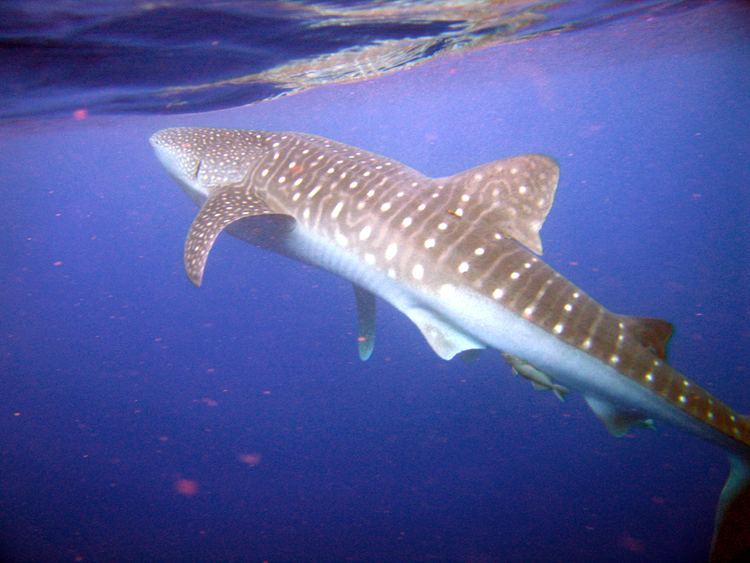 | ||
The flora and fauna of Honduras reflects the country's geographical location inside the tropics. This has allowed for diverse species of plants and animals to be adapted, but some of them are now in danger of extinction. This has posed the Honduran government, offices and nature organizations to look after the protection of the local environment, like the creation of nature reserves.
Contents
Flora
The flora of Honduras is very varied. Pluvioselva, classified a tropical rain forest, is one of its most impressive vegetal populations. Ecologists designated it "Hygrophilous Megatérmic formation", for corresponding to regions of high humidity and constant high temperatures, with a single dominant species, like pines or firs, covering big areas.
The eastern part of the country, La Mosquitia, has many plants trepadoras or enredaderas, like the lianes and many epifitas, most strikingly the orchids. Adapted to the humid environment, trees are enormous and do not possess deep roots sustaining thanks to the big spurs, while the leaves are large and many. The tree trunks are straight and smooth and their first branches are high above the forest floor. The rainforest corresponds to parts of the northern region below 600 meters in elevation; there is not dry station entirely clear-cut and covers 29% of the total of the surface of the country. Among the more typical vegetal species in this region biogeográfica: Real cedar (Cedrela Mexican), Common Cedar (Cedrela odorata), mahogany (Swetonia mahogoni L.), tree of María (Calophyllum brasiliense), Cortés (Tabebuia guayacan), "Espavel" or Mijao (Anacardium excelsum), guayabo (Guayabón) or (Tarminalia amazonia).
Numerous palm trees exist near the coasts, as well as tropical fruit trees and multicolored flowering plants. It is very common to find textile plants like cotton or pacaya. Also there are many medicinal plants like chicory, apazote and the Balsam of Tolú. They use like producing trees of rubber (Ficus elastica) and resin, the espino white and the palmacristi (Ricinus communis)
Fauna
Honduras fauna is very rich and varied being the most common the ones of arboreal life and those that live in the fluvial currents lacustrine waters. Big animals are not very numerous but there are hundreds of reptile species, amphibians and birds; lizards and a lot of varieties of fish in the currents. Cute, bats and myriads of birds abound in the trees. Since there is not cold station, thousands of varieties of insects population is wide: wasps, ants, mosquitos, zancudos, jejenes and others. Between the mammals find : "Danto" or Tapir (Tapirus bairdii), wild boar or Pecarí (Tayassu pecari), Jagüilla (His americanensis), Tiger or jaguar (Felis onca), cougar (Felis concolor), Tigrillo (Felis pardalis), wildcat or Caucel (Felis Wiedii), Yaguarundi or small cougar (Felis yaguaroundi), bat (Vampirus spectrum), pizote alone (Nasua narica), mapachín (Procyon lotor), Dare anteater (Myrmecophaga tridactyla), etc. Avifauna species are also numerous and very abundant some of them are: colibríes or sparrows in more than 20 different species; the viudita (Trogon rufus), the bird carpenter (Phleoceastes guatemalensis), the lechuza (Pulsatrix perspicillata), the tecolote (Ciccaba virgata), the Tucán or beak of razor (Rhanfastus sulfuratus and Pteroglosus torcuatus), lora yellow nape (Amazon ochrocephala), perico green of the coast (Aratinga finschi), king zopilote or condor centroamericano (Sarcoramphus pope), Eumops glaucinus.
Between the reptiles are the yellow beard (Botrox atrox), tamagás (Botrox nasuta), Porthidium nasutum, boa (Constrictor imperatur), cascabel (Crotalus durissus), green turtle (Chelonia mydas), alligator coffee (Caiman cocodrylus fuscus), lizard ( Cocodrylus acutus), serpent of choral, Acanthopleura granulata, Basiliscus vittatus. Other reptiles are the iguanas that mimetizan with the tones varied of the forest; the freshwater turtles like the caguama (Caretta caretta) and between the amphibians are abundant the toads and the frogs trepadoras of varied species.
The coasts of Honduras, are bathed north and east by Caribbean sea and in the south by the Pacific Ocean at Gulf of Fonseca, in turquoise waters of Sea Caribbean can be appreciated by means of diving coral reefs with a big diversity of calcareous seaweeds, red seaweeds, (Rhodophyta), like marine meadows, between other aquatic plants that tackle a natural ecosystem.
Large species of fauna can be found in Honduran coasts, there can be found Shark whales, dolphins, and a big variety of tropical fish, shrimps (Caridea) and a lot of species more
